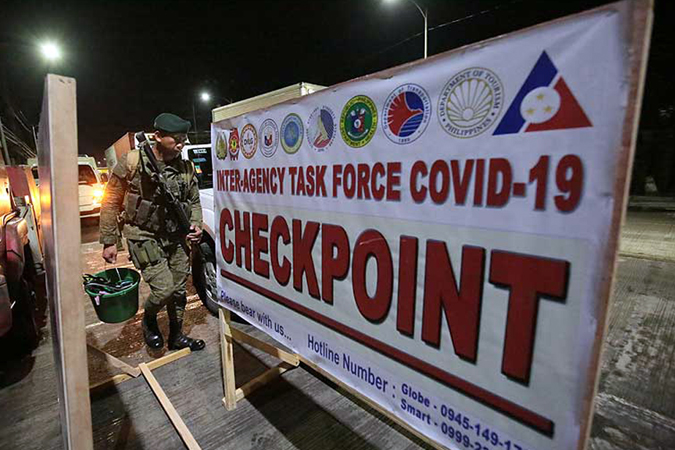Creeping and climbing through Vietnam in a Raptor
Text and photos by Angel Rivero
DID YOU know that Vietnam has massive sand dunes — forming some sort of mini desert in colors of red and golden-white? They’re found in a place called Mui Ne — a coastal fishing town in the south-central Binh Thuan province, only a few hours’ drive away from Ho Chi Minh (Saigon). This place was completely out of my radar, but I am so happy to have visited it, thanks to Ford who organized a regional adventure drive to showcase the powerful features of the new, 2020 Ranger Raptor.
The vehicle was first unveiled to the world in a grand launch in Thailand in early 2018, as a performance pickup truck inspired by the success of North America’s gargantuan F-150 Raptor truck. It has since earned itself a massive following and is now a hot-selling product in the Philippines and the entire ASEAN region — being Asia-Pacific’s only factory-built performance truck to date.
The Ranger Raptor is the first to use a 2.0-liter bi-turbo diesel engine that spits out 213ps of power and 500Nm of torque. It is mated with the same automatic transmission found in the F-150 — an astonishing 10-speed that is specifically powertrain-matched. This feature allowed Ford engineers to key-in wider gear ratios in very small ratio steps — thereby optimizing the gear spacing and resulting in better acceleration and responsiveness for the pickup.
The Ford Ranger Raptor is also truly one of a kind, as it is the only pickup truck with Watt’s linkage rear suspension with coilover rear springs — and these gift the vehicle with excellent lateral control. But perhaps the crown jewels of the Ranger Raptor are in its expensive, racing-spec dampers — which include standard, front and rear Fox Racing Shox shock absorbers. These enable velocity and position-sensitive damping, and ultimately allow the Ranger Raptor to comfortably travel at high speeds, even while off-road (cue in: its uber-popular, Baja drive mode).
It was thus an excellent opportunity to showcase the latest Ranger Raptor’s remarkable, technical and high-speed off-roading skills while driving up and through Vietnam’s mountain trails and the aforementioned colossal sand dunes. The personal driving experience was even a bit bizarre, having had to pilot right-hand-drive vehicles (pulled out from Thailand) through the left-hand traffic of Vietnam — a truly unique situation which I had not been able to experience before.
Our first drive course was through multiple stations within the woodlands of a mountain in Dalat — a Vietnamese hill town that is kind of their equivalent of our Baguio. Cool highland temperatures, a wealth of flowers, tiny lakes, and an abundance of strawberries and vegetables sparked a constant déjà vu as we drove across town and eventually up the hilly, pine forest where the technical team was waiting.
The first station up on that mountain was meant to showcase the Ranger Raptor’s Hill Descent Control — a useful feature that (when activated) automatically applies and continually adjusts braking pressure to smoothly guide the vehicle down steep, off-road slopes without any braking input from the driver. A constant downhill speed may be maintained based on the selected drive gear.
Other stations capitalized on the Ranger Raptor’s stock ground clearance and versatile drive modes, via abysmal ruts and complex excavations we had to make the truck climb out of. Fortunately, the pickup truck comes equipped with a terrain management system (TMS) that makes handling such obstacles a walk in the park. It offers six drive modes to choose from: Normal, Sport, Grass/Gravel/Snow, Mud/Sand, Rock, and Baja — the world’s first high-speed, off-road driving mode (named in honor of the iconic Baja Desert Trail).
The Ranger Raptor is also equipped with an electronic locking rear differential — a feature that fortifies its true, off-road capacity by delivering full engine torque to both rear wheels, even when one wheel is already off the ground (a pretty common predicament in hard, off-roading scenarios). It also has a towing capacity of up to 2,500 kilograms.
If you really think about it, the Ranger Raptor is sort of like a motocross bike, snowmobile, and ATV rolled up into a macho-sized pickup truck! Combine that with a very comfortable interior embellished with some handsome blue stitching, and you’ve got a truly enticing product that creates its own, unique market segment.
Our drive up, down, and around the loose and tricky mounds of sand in Mui Ne was likewise a breathtaking adventure — driving fast and in full throttle, while maintaining traction and control. If you think about it, every aspect of the design of the Ranger Raptor exists for a functional purpose. Say, for example, the aggressive front bumper with air curtain ducts where wind can pass through to reduce aerodynamic drag (it is not solely for aesthetic purposes). The front fenders are molded from composite materials that resist dents and dings that often come along with off-road adventures. The sidevstep boards have holes in them to allow potential sand, mud or snow to drain through. The seats are also specially engineered for off-road, high-speed performance support, and make use of technical suede for additional occupant grip.
Furthermore, the 2020 Ranger Raptor now comes equipped with camera-based, autonomous emergency braking (AEB) with pedestrian detection, a lane-keeping system, a windscreen-mount USB, and LED projector lamps with LED daytime running lights and automatic headlamps — for the same price.





